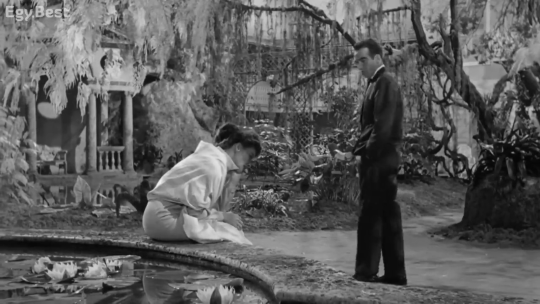
7 Easy Ways to Make Your Garden More Pollinator-Friendly
As the scent of late summer blooms fills the air, and the sun casts long, golden shadows across the garden, it’s a beautiful time to reflect on the vibrant life our green spaces support. But have you ever stopped to truly listen? The gentle buzz of bees, the flutter of butterfly wings – these are the sounds of a healthy ecosystem, one that relies heavily on pollinators. And lately, these essential creatures have been facing some serious challenges.
The good news is that we, as gardeners and homesteaders, have the power to make a real difference, right in our own backyards. By creating pollinator-friendly habitats, we can provide essential food and shelter for bees, butterflies, hummingbirds, and other beneficial insects. And the best part? It's easier than you might think! Here are seven simple ways to transform your garden into a buzzing, blooming haven for pollinators.
1. Plant a Diverse Selection of Native Flowers
Why Native Plants? Native plants are the cornerstone of a pollinator-friendly garden. They've evolved alongside local pollinators, providing the perfect nutrition and habitat. These flowers are adapted to the local climate and soil conditions, making them low-maintenance and thriving additions to your garden.
Actionable Tip: Research the native plants that are specific to your region. Local nurseries are excellent resources for finding the right varieties. Aim for a succession of blooms throughout the growing season, providing a constant food source. Some great options include:
- Early Spring: Wild violets, bloodroot, spring beauty
- Summer: Bee balm, coneflowers, milkweed, black-eyed Susans
- Fall: Asters, goldenrod, sunflowers
A Personal Anecdote: Last year, I added a patch of milkweed to my garden specifically for monarch butterflies. Watching them lay their eggs and seeing the caterpillars munch away on the leaves was an incredibly rewarding experience.
2. Ditch the Pesticides
The Danger of Chemicals: Many pesticides, even those marketed as "safe," can be harmful to pollinators. They can directly kill bees and butterflies, or indirectly affect them by contaminating their food sources.
Actionable Tip: Embrace organic gardening practices. Instead of using chemicals, focus on building healthy soil, attracting beneficial insects (like ladybugs and lacewings) to control pests naturally, and hand-picking pests when necessary.
A Simple Trick: A homemade insecticidal soap spray (mix a tablespoon of liquid dish soap with a quart of water) can be effective against aphids and other soft-bodied insects. Remember to test it on a small area of the plant first.
3. Provide a Water Source
Pollinators Get Thirsty Too! Providing a shallow water source is crucial, especially during hot summer months. Bees and butterflies need water to stay hydrated and to cool their hives.
Actionable Tip: A simple bird bath filled with pebbles or marbles is an ideal solution. The pebbles provide a safe landing spot for insects, preventing them from drowning. Change the water regularly to keep it fresh and clean. You can also use a shallow dish filled with water and stones.
4. Create Shelter and Nesting Sites
More Than Just Food: Pollinators need places to rest, shelter from the elements, and raise their young. Creating nesting sites is an often-overlooked aspect of pollinator-friendly gardening.
Actionable Tip: Leave areas of your garden undisturbed. Many native bees nest in the ground or in hollow stems. You can also create bee hotels by drilling holes of varying sizes into a block of wood. Leave leaf litter in certain areas to provide overwintering habitat for beneficial insects. Brush piles also work.
5. Plant Flowers in Clusters
Maximize Pollination Efficiency: Planting flowers in clusters of the same variety makes it easier for pollinators to find them and efficiently collect nectar and pollen.
Actionable Tip: Instead of scattering individual plants throughout your garden, group them together in patches. This will create a more visually appealing display and attract more pollinators.
6. Let Your Herbs Flower
Aromatic Blooms: Many herbs, such as lavender, rosemary, and thyme, produce beautiful flowers that are highly attractive to pollinators.
Actionable Tip: Resist the urge to constantly prune your herbs. Allow some of them to flower and enjoy the added beauty and benefits they bring to your garden. My lavender is always covered in bees during the blooming season!
7. Compost, Compost, Compost!
Feed the Soil, Feed the Pollinators: Healthy soil is the foundation of a thriving garden. Compost improves soil structure, provides essential nutrients, and helps plants resist pests and diseases.
Actionable Tip: Start composting your kitchen scraps and yard waste. Compost enriches the soil, reducing the need for synthetic fertilizers and creating a healthier environment for pollinators.
Downloadable Resource: Check out our Better Homes and Harvests Compost Guide for a step-by-step guide to creating your own compost!
Creating a Buzzworthy Backyard: Final Thoughts
By incorporating these simple practices into your gardening routine, you can transform your backyard into a haven for pollinators and contribute to a healthier environment. Remember, every little bit helps! Even a small patch of pollinator-friendly flowers can make a big difference.
Now is the perfect time to start planning your pollinator garden for next season. Research native plants in your area, start composting, and get ready to welcome a flurry of buzzing, fluttering friends to your garden.
We'd love to hear about your experiences with pollinator gardening! What are your favorite pollinator-friendly plants? Share your tips and tricks in the comments below! Let’s create a vibrant community of pollinator advocates, one garden at a time.